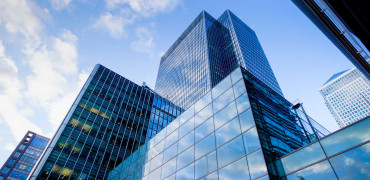The energy hierarchy was developed in the early 2000s as an approach to designing sustainable buildings that use less energy before they use renewable energy.
The original hierarchy was often presented with three levels – be lean, be clean and be green.
First, a building or development must be designed to be lean in its energy use. That is, it must be energy efficient.
Secondly, the project must be clean, so it should avoid fossil fuels and use local energy sources such as secondary heat (via heat networks, for example).
Thirdly, the development must be green, maximising opportunities for using renewables, preferably producing the energy on-site.
The energy hierarchy has been used widely in the construction industry as a shorthand for a sensible design approach to achieve more energy efficient and sustainable buildings.
For example, the 2021 London Plan requires developments in the capital to follow the hierarchy. But it goes further, adding a fourth layer: be seen.
This hierarchy element is the most important today
Being seen to be green
This fourth factor highlights the importance of monitoring, verifying and reporting on energy performance. And in many ways, this hierarchy element is the most important today.
Over the years, we have heard about the ‘performance gap’ between buildings as they’re designed and their performance when occupied and operational. CIBSE TM 63 was developed to help identify this gap through measurement and verification.
Gathering information so that actual performance can be ‘seen’ is becoming increasingly important.
And it’s something that building owners and operators are actively seeking out. For example, the National Australian Built Environment Rating System (NABERS) was launched in 2020 in the UK for office buildings and has quickly gained popularity.
NABERS bridges the gap between the designed and in-use energy performance for new and existing buildings. Toronto Square in Leeds (owned by Grosvenor) was the first UK office to be verified after twelve months of monitoring, achieving 4.5 Stars.
Other property groups are adopting the scheme, with a growing number of office schemes pursuing NABERS ratings.
Corporate reputation
The ‘be seen’ principle is slightly ironic for HVAC systems, as they are usually well hidden from building occupants. But they impact building energy performance significantly, so monitoring their operational performance is critical to delivering building energy efficiency.
Building controls are essential to this, of course, and Mitsubishi Electric has developed a range of in-room controls and our MELCloud system for remote monitoring and control.
From the point of view of building services design and delivery, the principles of being lean, clean, green and seen are to be welcomed. The industry has been working for many years to bring energy efficient equipment, including commercial heat pumps, to the top of the list for specifications. And the ability to prove efficiency in operation should strengthen their case further.
With more corporate tenants and building owners setting out ESG strategies that include carbon reduction goals, transparency on building performance will be an essential requirement.
In addition, consumers are becoming more wary of ‘greenwashing’ and are looking to companies they buy from to prove their commitment to environmental issues.
Being seen to achieve efficient and low-carbon buildings is, therefore, a crucial aspect of corporate reputation.
Dan Bull is Business Development Manager for M&E Contractors




